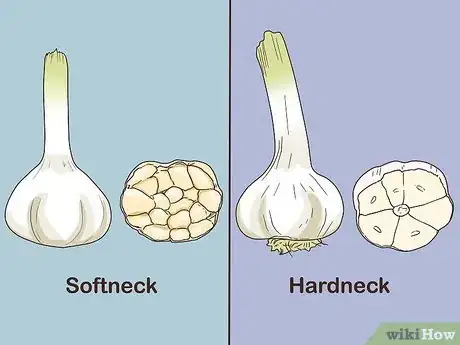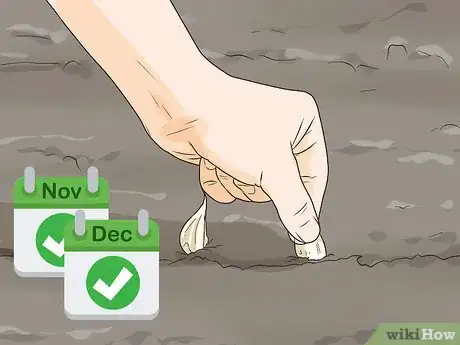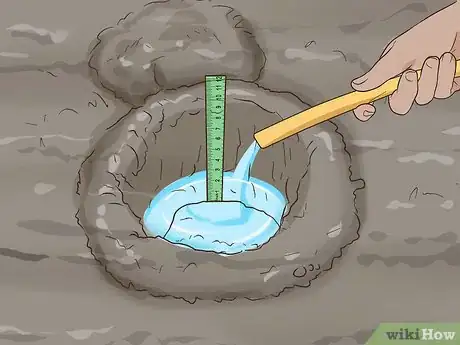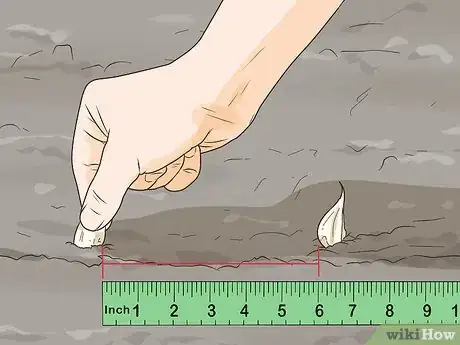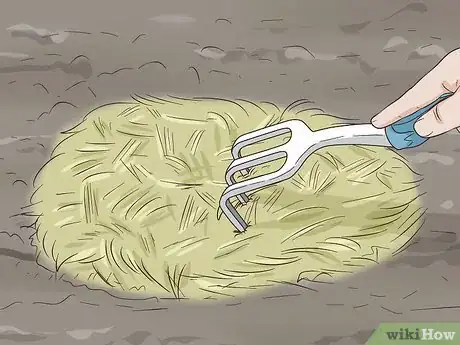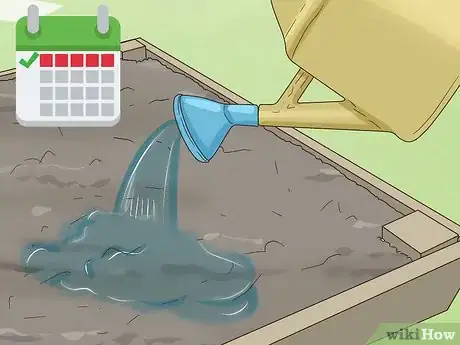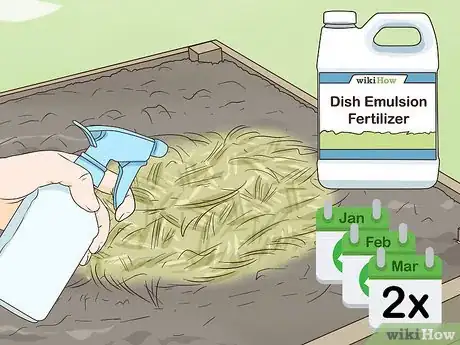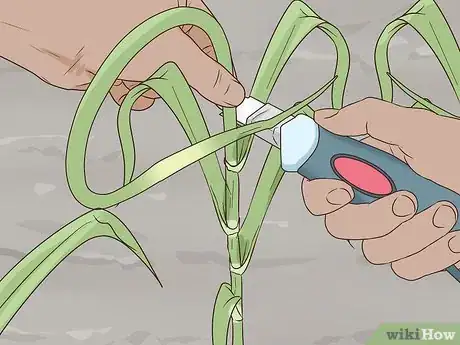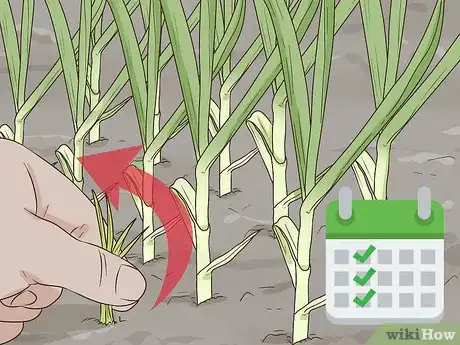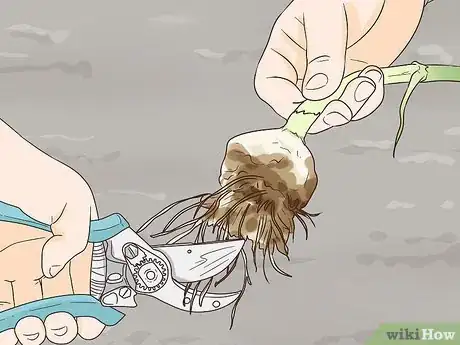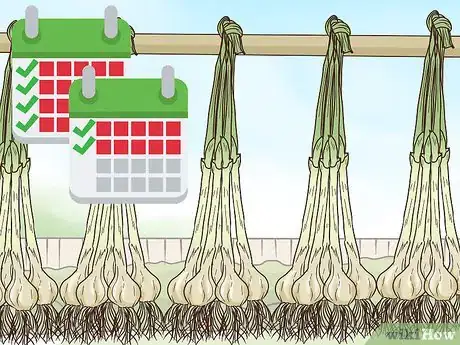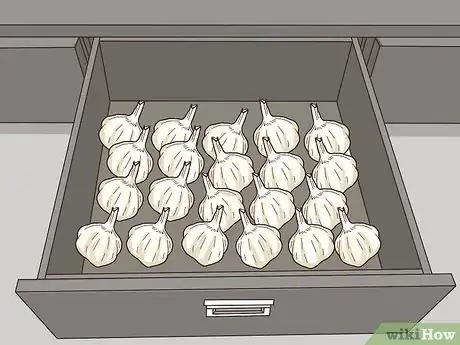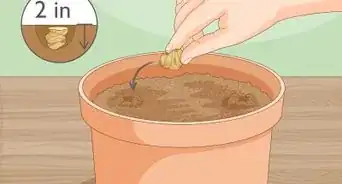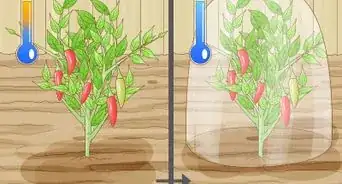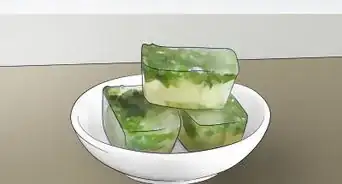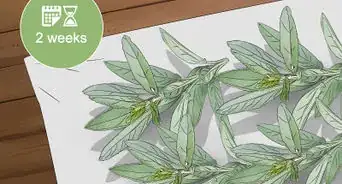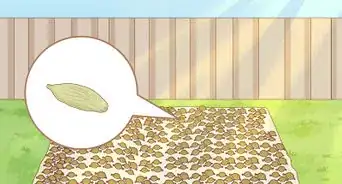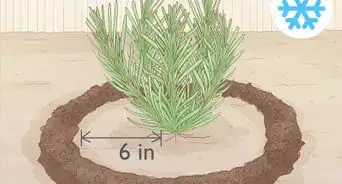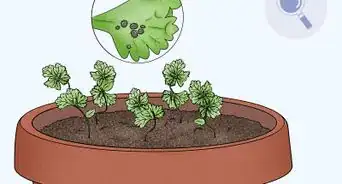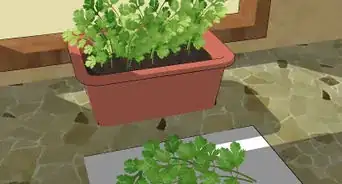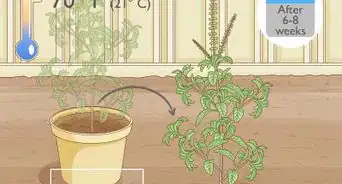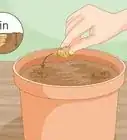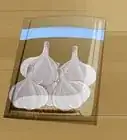This article was co-authored by Lauren Kurtz. Lauren Kurtz is a Naturalist and Horticultural Specialist. Lauren has worked for Aurora, Colorado managing the Water-Wise Garden at Aurora Municipal Center for the Water Conservation Department. She earned a BA in Environmental and Sustainability Studies from Western Michigan University in 2014.
There are 10 references cited in this article, which can be found at the bottom of the page.
wikiHow marks an article as reader-approved once it receives enough positive feedback. In this case, 100% of readers who voted found the article helpful, earning it our reader-approved status.
This article has been viewed 123,749 times.
If you're in Florida and want to grow garlic, you've chosen a versatile and adaptable plant. Garlic grows well in most climates, including Florida's warm weather with few frosts. Taking certain precautions, however, can help your garlic thrive. With the right garlic variety and growing techniques, your garlic can produce a bountiful harvest in Florida!
Steps
Planting Garlic
-
1Choose a softneck garlic variety instead of hard-neck. Softneck garlic adapts better to Southern climates and needs less involved care than hardneck garlic. When growing garlic in Florida, buy softneck garlic to give your plant every chance to thrive.[1]
- Some softneck varieties that grow well in Florida include Thermadrone, lorz Italian, Georgian Crystal, Creole, and Romanian Red garlic plants.
- You can buy softneck garlic heads at most plant nurseries. Buy 1 clove for every garlic plant you want in your garden, as each garlic plant will produce a single head.
-
2Plant your garlic plant between fall and early winter for the best harvest. Because of the warm climate with very little frost, you can plant your garlic anytime through early winter (November or December). If you plant your garlic during this time, you can expect a harvest around May or June.[2]
- When planted in the fall, garlic plants stay dormant in the winter but will resume growing in spring. It will form roots but little-to-no top growth until around February.[3]
- If you prefer, you can also plant your garlic in February or March for a late summer or autumn harvest. Garlic grown in the South, however, produces fuller harvests when planted in fall.[4]
- Some hardneck varieties of garlic need to be chilled for 10-12 weeks before planting them in the spring.
- Softneck varieties of garlic do not need to be chilled are better suited to warm, humid climates
Advertisement -
3Choose a partially shaded spot in your garden to grow garlic. Garlic plants grow best in cooler soil temperatures, preferably around 60 °F (16 °C). To keep your soil chilled, find a spot in your garden with shade during the hottest part of the day.[5]
- Growing garlic in temperatures hotter than 90 °F (32 °C) can stunt your plant's bulb growth, which makes using shade to chill the soil essential.
- If you can't find a spot with natural shade, put up shade cloth over the garlic to protect it from the sun. You can buy shade cloth online or at most plant nurseries.
-
4Plant your garlic in well-draining soil with plenty of organic matter. Garlic needs soil that drains well and contains organic nutrients to produce a strong harvest. Combine a nitrogen-rich soil mix or a compost to your garden's soil before planting your cloves to help it grow well in your garden.[6]
- To test whether your soil is well-draining, dig a 12 in (30 cm) deep hole in your garden and fill it with water. If the hole takes 5-15 minutes to empty, you've found well-draining soil.[7]
- If you don't have well-draining soil, add mulch, a well-draining soil mix, or organic matter to the soil and repeat the draining test again.
- Spread about 1–2 inches (2.5–5.1 cm) of organic matter over the garden soil, then mix both together thoroughly before planting the garlic.
-
5Plant a garlic clove in the soil with the roots facing downward. Because garlic does not produce seeds, the best way to grow it is by planting a single clove in the ground at a depth of 4–6 inches (10–15 cm). Fill the hole with well-drained soil and sprinkle the soil with water until moist.[8]
- Wait until immediately before planting to separate the garlic cloves from the head
- If you're planting multiple garlic cloves, place them about 4 to 6 inches (10 to 15 cm) apart.
-
6Mulch your garlic directly after planting. Cover the soil surrounding your garlic with 5–8 inches (13–20 cm) of seedless straw. This will keep the soil cool, give your plants extra nutrients, and prevent weeds from growing as your garlic grows.[9]
- Avoid adding mulch if your soil is damp or you live in a wet, humid climate. Too much moisture in the soil will cause the bulbs to rot.
Caring for Your Garlic
-
1Water your garlic plants about once a week. Garlic needs about 1 in (2.5 cm) of water a week to thrive in cool or warm temperatures. During summer months with very little rainfall, check your garlic plant's soil several times a week for dryness. Stick your finger in the soil—if it is dry instead of moist, water it until the soil is damp but not waterlogged.[10]
-
2Spray a liquid fertilizer on your plant twice a month. Garlic needs plenty of nitrogen to produce a strong harvest. From the time the garlic shoots emerge to harvest, give your plants a fish emulsion fertilizer every other week or if your plant develops yellow leaves (a sign of nitrogen deficiency).[11]
- You can buy fish emulsion fertilizer at many garden centers or nurseries. If you can't find a fish emulsion fertilizer, another nitrogen-rich fertilizer will work as an alternative.[12]
-
3Cut back your plants' "scape" for fuller bulbs. The garlic scape is a large, curled blossom on the top of garlic plants. Remove the scape when it grows to redirect your plant's energy towards growing large, healthy bulbs.[13]
- Cook with the scape to keep it from going to waste. You can find scape recipes online, from using scape in stir-fry to making a scape salad.
- The scape can be used as an alternative to chives or green onions.
-
4Weed the area around your garlic at least once a week. Excessive weeds can reduce your plant's yield by over half. To prevent weeds from taking your garlic's nutrients, pull weeds regularly before they get out of hand.[14]
Harvesting Garlic
-
1Wait until your garlic's leaves have dried and bent at an angle. In Southern states, garlic should take between 6-8 months to mature. When you've reached about 6 months since planting, watch for half of your garlic's leaves to dry and bend towards the ground.[15]
- If you planted your garlic in the late fall or early winter, expect to harvest in May, June, or July. If you planted in spring, you may need to wait until August, September, or October.[16]
-
2Pull your garlic from the ground and trim the roots. Brush off any loose soil from the roots and trim them with pruning shears until they're at a length of about 6 inches (15 cm). Trimming the roots is essential after pulling in humid climates to prevent the bulb from rotting or molding while you store it.[17]
- Leave the stalks attached during the harvesting process.
-
3Cure your garlic in a dry, cool place for 4-6 weeks. Hang your garlic by their stalks on a ceiling or spread them out on a rack in a cool, dark, and dry place. Leave them hanging for about 4-6 weeks to dry them out completely and prepare them for storage.[18]
- Garages or garden sheds are ideal for curing garlic.[19]
- Place a rotating fan near the garlic bulbs to dry them out quickly and prevent bulb rot.
-
4Store your garlic bulbs in a cool, dry place. After you've dried your garlic, remove the stalks and place the bulbs in a refrigerator drawer or on the counter. Whole garlic lasts for 3-6 months when stored at room temperature.[20]
- Don’t put garlic in an airtight container. Moisture can get trapped inside and cause the garlic bulbs to rot.
Expert Q&A
Did you know you can get expert answers for this article?
Unlock expert answers by supporting wikiHow
-
QuestionShould I trim the leaves of my garlic plant?
 Lauren KurtzLauren Kurtz is a Naturalist and Horticultural Specialist. Lauren has worked for Aurora, Colorado managing the Water-Wise Garden at Aurora Municipal Center for the Water Conservation Department. She earned a BA in Environmental and Sustainability Studies from Western Michigan University in 2014.
Lauren KurtzLauren Kurtz is a Naturalist and Horticultural Specialist. Lauren has worked for Aurora, Colorado managing the Water-Wise Garden at Aurora Municipal Center for the Water Conservation Department. She earned a BA in Environmental and Sustainability Studies from Western Michigan University in 2014.
Professional Gardener
-
QuestionIn one frame, you talk about planting the cloves, and in the very next frame, you say to point the garlic "heads" in an upright orientation. So which is it, cloves or entire heads?
 Community AnswerOnly plant the individual cloves.
Community AnswerOnly plant the individual cloves. -
QuestionDo the bottom leaves normally turn brown and dry? (The plant appears quite healthy otherwise.)
 Community AnswerEither your harvesting time is near (yippee!) or you have been watering the plant too much or too little (uh-oh). Make sure you're only watering when the soil is dry! You may also need to fertilize your soil, as not doing so can also cause yellowing of leaves.
Community AnswerEither your harvesting time is near (yippee!) or you have been watering the plant too much or too little (uh-oh). Make sure you're only watering when the soil is dry! You may also need to fertilize your soil, as not doing so can also cause yellowing of leaves.
Warnings
- Do not plant garlic cloves from the grocery store in your garden. They most likely aren’t suited for your climate and grocery store garlic is treated to boost their shelf life and can be difficult to grow.[22]⧼thumbs_response⧽
Things You'll Need
- Garlic bulbs
- Well-draining soil
- Organic matter
- Shovel
- Water
- Mulch
- Fertilizer
- Pruning shears
References
- ↑ http://greyduckgarlic.com/Southern_Garlic_Grower_Guide.html
- ↑ http://gardeningsolutions.ifas.ufl.edu/plants/edibles/vegetables/garlic.html
- ↑ https://www.rodalesorganiclife.com/garden/trick-planting-healthy-garlic
- ↑ https://www.almanac.com/plant/garlic
- ↑ http://greyduckgarlic.com/Southern_Garlic_Grower_Guide.html
- ↑ http://greyduckgarlic.com/Southern_Garlic_Grower_Guide.html
- ↑ https://www.treepeople.org/sites/default/files/pdf/resources/How-to%20Test%20Soil%20Drainage.pdf
- ↑ http://www.jacksonville.com/entertainment/home-and-garden/2010-09-12/story/herfes-how-grow-garlic
- ↑ https://www.almanac.com/blog/gardening/garden-journal/planting-garlic-fall
- ↑ http://www.agardenforthehouse.com/2011/09/my-garlic-sowing-and-growing-guide/
- ↑ https://www.almanac.com/blog/gardening/garden-journal/planting-garlic-fall
- ↑ https://www.almanac.com/plant/garlic
- ↑ http://www.mariasfarmcountrykitchen.com/how-to-grow-garlic-in-5-easy-steps/
- ↑ http://greyduckgarlic.com/Southern_Garlic_Grower_Guide.html
- ↑ http://gardeningsolutions.ifas.ufl.edu/plants/edibles/vegetables/garlic.html
- ↑ http://greyduckgarlic.com/Southern_Garlic_Grower_Guide.html
- ↑ http://greyduckgarlic.com/Southern_Garlic_Grower_Guide.html
- ↑ http://greyduckgarlic.com/Southern_Garlic_Grower_Guide.html
- ↑ http://www.mariasfarmcountrykitchen.com/how-to-grow-garlic-in-5-easy-steps/
- ↑ https://www.eatbydate.com/vegetables/fresh-vegetables/how-long-does-garlic-last-shelf-life/
- ↑ https://www.almanac.com/plant/garlic
- ↑ https://www.almanac.com/plant/garlic
